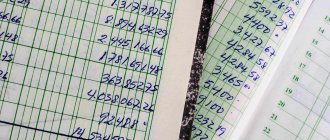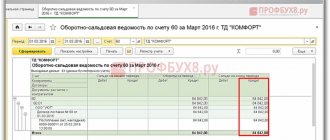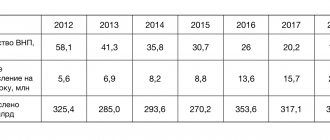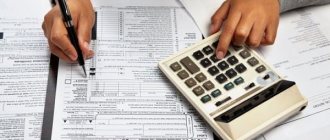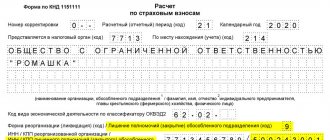The taxpayer replenishes the country's budget with his payments. Money goes to solving important problems. For example, the water resources that our country is rich in are exhaustible. If you do not use water within reasonable limits, and constantly pollute it with sewage, chemical, biological, and radioactive waste, then very soon the people's resource, the source of life, will become scarce.
To prevent this from happening, the procedure for calculating water tax is based on strict control of the activities of enterprises and organizations (including individual entrepreneurs) regarding water consumption and emissions into it. In addition to the long process of obtaining permits, companies must install special water intake meters. Each section, for example, of a river, has its own coefficient. In addition, in the territory of one region there may also be additional coefficients.
Plus coefficient per cubic meters of resource taken. Particular attention to mineral and healing springs. Individuals pay for water at a reduced rate at home, which is calculated by calculations using certain coefficients. A water tax is paid for the entire population of the city, village, and utility bills received. This is what Vodokanal does.
An environmental tax is levied for pollution of the external environment - air, water, land, subsoil. Each organization must obtain a license to emit a certain amount of pollutants of a certain hazard class. Citizens pay for garbage removal. This money is summed up and transferred to the tax account.
Current rates:
| Taxes | Current interest rate | Who is obliged to pay |
| On personal income tax | 13% for residents from salaries and dividends; 30% for non-residents with salary, 15% on dividends; IP – 13% | Individuals and legal entities |
| For property | Calculated based on cadastral value. Benefits are provided. The tax increases by 20% every year until 2025. For individuals - state. limit from 0.1% to 2% depending on the value of the property. There are benefits. For organizations, preferential limit is 1.1% =. Regulated by Ch. 30 Tax Code of the Russian Federation | |
| With simplified tax system | “Income” - 6% (maximum rate); “Income minus expenses” - maximum 15% | Legal faces |
| On UTII | From 7% to 15%, depending on the category of taxpayers | Legal faces |
| Water tax | The rate depends on the locality, region, water intake facility | Phys. persons pay according to the meter (utilities). Officially, taxpayers are organizations; |
| Calculated according to Article 346.39 of the Tax Code of the Russian Federation The rate depends on the coefficients: region, object, area of water resource, security object, volumes of water withdrawn | Legal entity whose activities are related to water intake | |
| Ecological | Rates are calculated by waste class (by toxicity) and for emissions into the atmosphere, water, and landfills | Organizations. Citizens pay a fee for garbage collection |
| Land | Based on cadastral value using the deflator coefficient, regional and other coefficients. | Individuals and legal entities in accordance with Art. 391 Tax Code of the Russian Federation |
| MET | Rates are in percentages (ad valorem) and in rubles per ton (specific). The tax is calculated based on a combination of different parameters in accordance with the Land Code and the Tax Code of the Russian Federation | Legal entities and individual entrepreneurs pay as subsoil users who have a license for their activities |
Payment of taxes occurs for the reporting period, which, according to the parameters established by law, occurs without fail after submitting reports for the month, quarter, or year. Taxpayer organizations are informed about all changes in an explanatory Letter. This document is sent only to those companies that are required to make payments according to their activities.
Exact payment deadline in 2021
As before, individuals in 2021 pay 3 property taxes based on notifications sent to them by the tax authority.
For all property taxes, the payment deadlines in 2021 are the same - in accordance with the current legislation, this must be done no later than December 1 of the year that follows the previous tax period (year). And this was 2017.
However, December 1st in 2021 is a Saturday, so the due date for property taxes in 2021 is moving forward. They must be deposited into the treasury on December 3, 2018 inclusive. It will be Monday.
Personal taxes, payment deadlines, why the notification was not received
Personal property taxes in 2021 are paid for 2021.
That is, accruals will be made for the previous tax period. This rule applies to all taxes. In other words, if a citizen purchased an apartment in 2021, he will need to pay for it only in 2021. And so on. If a citizen has received personal property tax for the previous period, he must give the payment to the previous owner of the property - this is his responsibility.
https://www.youtube.com/watch?v=https:accounts.google.comServiceLogin
The period of payment of property tax for individuals causes many problems for citizens. Some people do not know until what point the Federal Tax Service accruals will not be considered overdue.
Currently, tax payment must be made by December 1, 2021. If the citizen does not complete the transaction before this time, he will have to face certain consequences. And the longer the funds don’t arrive, the more you’ll end up paying. Personal property tax in 2021 also had to be “closed” before the beginning of December.
No deferments are provided for citizens. You will either have to pay the bills or accept the negative consequences of the resulting debt. Although, they can be avoided by paying enough attention to your tax responsibilities.
How to pay property tax for individuals? You can cope with the task through a visit to the authorized bodies, and remotely. But first you need to find out how much money to transfer to the Federal Tax Service.
In general, information about the amount of payment is usually indicated in the payment order. If you wish, you can use the tax calculator on the Federal Tax Service website. There, based on the entered data, information about the amount of charges will be displayed.
The personal property tax rate plays a huge role. At the moment it is mostly 0.1%. For property worth more than 3,000,000 rubles, you will have to pay a tax at a rate of 2%; for unfinished construction projects they pay 0.3%.
Personal property tax rates change from time to time. Therefore, it is better to follow the news on the Federal Tax Service website. And if you have any questions, contact your local tax authorities for clarification. Only there they will be able to give the most accurate and reliable answers to the questions that arise.
In accordance with paragraph 1 of Art. 17 of the Tax Code of the Russian Federation, any tax is considered valid if the following elements are defined for it:
- an object;
- base;
- period;
- bid;
- procedure and terms of payment, as well as calculations.
In some cases, benefits may be established for certain taxes (clause 2 of article 17 of the Tax Code of the Russian Federation).
Let us study in more detail the specifics of these elements.
The corresponding object for the property tax of individuals may be (clause 1 of Article 401 of the Tax Code of the Russian Federation):
- separate residential building (including country houses);
- separate living space (in the form of an apartment or room);
- garage, parking space;
- building or structure for other purposes;
- unfinished construction;
- a complex of real estate objects of a single purpose.
The common real estate of an apartment building cannot be recognized as an object of taxation (clause 3 of Article 401 of the Tax Code of the Russian Federation).
In the period from 2015 to 2021, the base for the tax in question is determined on the basis of the cadastral price of the objects we discussed above, if this is established by the legislative acts of the constituent entity of the Russian Federation. From 2021 - only on the basis of the cadastral price of the relevant objects (clause 1 of Article 402 of the Tax Code of the Russian Federation). If regional authorities have not adopted norms according to which the base is formed based on the cadastral price of real estate, then it is determined on the basis of the inventory value of objects, as long as this is permitted by law (clause 2 of Article 402 of the Tax Code of the Russian Federation).
In general, the tax base for a particular property is equal to its cadastral value, except for those cases when the tax is paid (Article 403 of the Tax Code of the Russian Federation):
- per apartment - in this case, the cadastral base for it is reduced by the cadastral price of 20 sq. m in it (clause 3);
- room - in this case, the base for it is reduced by the cadastral price of 10 sq. m in it (clause 4);
- residential building - in this case, the base for it is reduced by the cadastral price of 50 square meters. m in it (clause 5);
- a single complex of real estate objects, including at least one residential premises or house - in this case, the base for it is reduced by 1,000,000 rubles. (clause 6).
Municipal legal acts may increase the amounts of the specified deductions that reduce the base for the tax in question (clause 7 of Article 403 of the Tax Code of the Russian Federation). If the use of a deduction leads to the formation of a negative value, the tax base will be equal to 0 (clause 8 of Article 403 of the Tax Code of the Russian Federation).
The base based on the inventory price is equal to the corresponding price multiplied by the deflator coefficient established by law.
The tax period for the tax in question is a year (Article 405 of the Tax Code of the Russian Federation). In accordance with paragraph 1 of Art. 409 of the Tax Code of the Russian Federation, the real estate tax for individuals from 2021 (i.e., from the tax accrued for 2015) must be paid before December 1 of the year following the tax year. Tax is paid upon receipt of a tax notice from the Federal Tax Service.
To calculate tax based on cadastral and inventory values, different rates are applied. In both cases, they can be established by regional authorities - but within the limits reflected in the Tax Code of the Russian Federation.
According to the cadastral base, rates can be set at no more than (clause 2 of Article 406 of the Tax Code of the Russian Federation):
- 0.1%, if the object of taxation is a house, residential premises, unfinished construction, a single complex in which there is at least one residential premises or house, a garage, a parking space, a building in a country house with an area of up to 50 square meters. m;
- 2%, if the object of taxation is determined in accordance with the conditions of paragraphs. 7, 10 tbsp. 378.2 of the Tax Code of the Russian Federation or has a cadastral value of more than 300,000,000 rubles;
- 0.5% - for any other objects.
We invite you to read: How long can you return a product to the store?
Rates based on the cadastral base are accepted in the region in the amount specified in the Tax Code of the Russian Federation, unless other rates are established by the law of the region (subclause 1, clause 6, Article 406 of the Tax Code of the Russian Federation). Moreover, the region has the right to reduce (down to zero) or increase (but no more than 3 times) the rate for objects that, according to the Tax Code of the Russian Federation, are taxed at a rate of 0.1% (clause 3 of Article 406 of the Tax Code of the Russian Federation).
According to the inventory base, rates can be set at no more than (clause 4 of Article 406 of the Tax Code of the Russian Federation):
- 0.1% if the inventory value of the object, taking into account the deflator coefficient, does not exceed 300,000 rubles;
- 0.1–0.3%, if the inventory value of the object, taking into account the deflator coefficient, is 300,000–500,000 rubles;
- 0.3–2%, if the inventory value of the object, taking into account the deflator coefficient, exceeds RUB 500,000.
If the rates for the inventory base are not determined by the law of the region, then their value will be (subclause 2, clause 6, article 406 of the Tax Code of the Russian Federation):
- 0.1% if the inventory value of the object does not exceed 500,000 rubles;
- 0.3% if the inventory value is more than 500,000 rubles.
Regional authorities have the right to differentiate rates for both bases for objects of the same category, but different (clause 5 of Article 406 of the Tax Code of the Russian Federation):
- cadastral (inventory) value;
- type of object;
- location;
- specifics of the territorial zone in which they are located.
In order to calculate the tax for 2015, as well as for the period from 2016 to 2021 in the region where laws on calculating tax based on the cadastral price have been adopted (the majority of such subjects of the Russian Federation), you need to know:
- cadastral and inventory price of the property;
- rates - cadastral and inventory;
- deflator value;
- object area;
- values of reduction coefficients;
- Are tax benefits applicable to tax calculation?
When calculating the tax from 2021, if for the region it turns out to be the 5th year of the beginning of the application of calculation from the cadastral value, it will not be necessary to take into account in the formula for its calculation:
- inventory value, as well as the rate that is set for it;
- deflator;
- reduction factor.
H = (H1 - H2) × K H2,
N - calculated property tax.
N1 - tax according to the cadastral base.
N2 - tax based on the inventory base, calculated for the year preceding the beginning of the introduction in the region of calculating the tax on the cadastral value. For 2014, it is determined according to the rules of the Law “On Taxes on Personal Property” dated December 9, 1991 No. 2003-I, which ceased to be in effect in 2015, and for later periods of the beginning of the introduction in the region of tax calculation based on cadastral value - according to the rules of the law region that was in effect in the year preceding the start of calculating the tax on the cadastral value.
K is a reduction coefficient, the value of which increases consistently during the first 4 years of the introduction in the region of calculating tax from the cadastral value, amounting to 0.2, respectively; 0.4; 0.6 and 0.8.
https://www.youtube.com/watch?v=ytadvertiseru
That is, from the 5th tax period (if the calculation from the cadastral value began in 2015, then it will be 2021) the tax will be charged on the cadastral value in full. Since, from 2021, tax calculation other than the cadastral value will be discontinued, in regions that started doing it later than 2016, they will not be able to use the right to apply reduction coefficients to the full extent.
We can consider how this formula is applied by studying a practical example of calculating the amount of tax.
Let's assume that you need to calculate tax for 2015:
- we started paying property taxes in 2015 and have the right to apply a reduction factor of 0.2;
- we do not have tax benefits (we will study their specifics a little later);
- we have an apartment of 70 sq. m;
- the cadastral price of the apartment is 2,000,000 rubles, the inventory price is 300,000 rubles;
- we live in Kazan, where there is a rate of 0.2% for the cadastral base (decision of the Kazan City Duma dated November 20, 2014 No. 3-38) and 0.1% for the inventory base at a cost of less than 500,000 rubles. taking into account the deflator (the norms of the Tax Code of the Russian Federation are in force, the regional normative legal acts have not been adopted);
- the deflator coefficient established for the last year of application of the calculation from inventory value (2014) is equal to 1.216 (Order of the Ministry of Economic Development of Russia dated November 7, 2013 No. 652).
A pensioner has two apartments: one in Moscow, with a cadastral value of 3 million, the other in Omsk, with a cadastral value of 810,000 RUR. Since the Moscow apartment is more expensive, by default he will receive a benefit for it. But according to the application, he can choose an Omsk apartment, then he will have to pay for the Moscow one. If we are talking about property tax for 2021, then the choice must be made before December 31, 2021.
This pensioner also has a private house. Since this is a different type of real estate, you won’t have to pay for it either.
He can submit an application for the benefit itself, and not for choosing an object for the benefit, at any time. If we are talking about property taxes for 2019, it is better to meet the deadline before April 1, 2021.
When to expect and where to look for a tax notice
Notification for three property taxes is sent to payers no later than 30 working days before the due date for their payment, along with bills for their transfer.
You need to wait for these documents:
- at the address of residence (registration) of the payer;
- to a different address that the payer indicated in the corresponding written application (the form of such an application was approved by order of the Federal Tax Service dated May 29, 2014 No. ММВ-7-14/306).
For payers registered in the “Personal Taxpayer Account for Individuals” on the official website of the Federal Tax Service of Russia, tax notices for payment of property taxes are posted ONLY in the specified electronic service and are not sent by regular mail.
But there is an exception: payers can submit notifications to the Federal Tax Service about the need to receive the documents in question on paper. Then tax notices will be sent to them both on paper and posted in their personal account.
Land tax
Without moving too far from the issue of cadastral valuation of real estate, it makes sense to talk about the land tax, which will also experience changes starting next year. At the moment it is known for sure that it will be increased by 20% of the current rate. Moreover, the government did not forget to openly say that until 2020 it will be guaranteed to increase. It is expected that this measure will increase budget injections from this direction by at least 7-8 times, which, according to parliamentarians, should have a positive impact on the well-being of the regions. They, in turn, undertake to spend the lion's share of this money on infrastructure development, on the reconstruction of buildings and structures that are in disrepair. Let's see how this will be implemented in practice. However, as you and I understand, this is unlikely to happen without theft.
A special case
Relatively recently, the Federal Tax Service resolved the situation with the distribution of notices and payments for too small amounts of property taxes.
As a result, a tax notice is not generated in two cases:
- If there are tax benefits in the amount of calculated taxes (for all types of taxable property).
- If the total amount of taxes payable by an individual is less than 100 rubles.
And again there is an exception: in any case, even a small amount of payment of property taxes in 2021 will have to be carried out upon notification (up to 100 rubles). But the tax office will send it in the year after which it loses the right to send it. And this is after the expiration of the previous three years (clause 2 of Article 52 of the Tax Code of the Russian Federation).
Also see When a Property Tax Notice Doesn't Receive.
Transport tax
For those who have to pay it, we would like to immediately make a note: there are no plans to increase rates here. However, the state found another way (admittedly, more humane) to collect the necessary money, increasing the list of people who must pay it. Thus, from 2021, the following owners will fall under the category of transport tax payers:
- Passenger cars;
- Helicopters;
- Motorcycles and scooters;
- Snowmobiles;
- Buses of different sizes and dimensions;
- Motor boats and yachts;
- Transport on pneumatic and caterpillar tracks.
Of course, not every company has a couple of helicopters or snowmobiles on its balance sheet, but such organizations exist. In some regions and quite a lot, for example, in the territories of the Far North, Kamchatka, Yakutia and Sakhalin Island. From now on, they will also have to pay for their fixed assets.
conclusions
As we see, the “first signs” brought us a fairly voluminous package of changes to tax legislation. As practice shows, starting from the fourth quarter of each year and until its end, the government publishes information about changes in the regulatory framework 2-3 times guaranteed. Therefore, this is not a complete list of what we will have to deal with in the foreseeable future. In any case, what is already known can be characterized as a sustainable course for replenishing the country's budget deficit at the expense of ordinary taxpayers. We weren’t surprised, gentlemen, we weren’t surprised...
We are waiting for more news, dear readers! We wish you good luck!
Resort fee
Back in mid-2021, a group of parliamentarians took the initiative to create some kind of “resort tax” for some regions of our country in order to provide additional financial injections into their budget. How will it work? If, suppose, a citizen of our country or a citizen of a foreign state decides to go to Crimea, books a hotel room and lives there during the holiday period, then he will have to pay about 100 rubles to the treasury for each day spent in the hotel. The message with which legislators voiced this initiative was that many “developed” countries have similar experience, and it managed to bring tangible benefits to those regions where the resort fee has operated for several years. It’s not clear why all this is being invented, if from 2014 until today, the interest of Russians in visiting Crimea has been rapidly falling, especially since going to Turkey, for example, was 2 or even 3 times cheaper...
